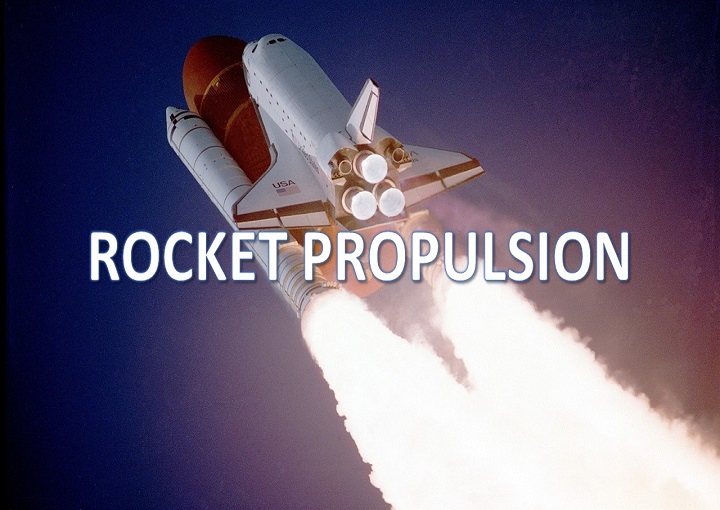Unlock the secrets of rocket propulsion and dive into the fascinating world of space travel with our informative blog article. Gain valuable insights into the principles and mechanisms behind rocket engines, from solid and liquid propellants to cutting-edge technologies. Discover how these powerful engines propel spacecraft to unimaginable speeds and explore the future of space exploration. Whether you’re a space enthusiast or a curious mind, this blog post is your gateway to understanding the incredible science behind rocket propulsion
Introduction
Rocket propulsion has long fascinated humanity with its ability to break free from the bounds of gravity and explore the vast expanse of space. In this article, we will delve into the world of rocket propulsion, its history, types, advantages, applications, and future developments. Join us on this thrilling journey through the cosmos.
The escape velocity of Earth is approximately 11.2 kilometers per second (m/s), or about 33,000 kilometers per hour. This is the minimum velocity required for an object to overcome Earth’s gravitational pull and escape into space. Escape velocity depends on the mass and radius of the planet. In the case of Earth, it is the speed needed to break free from the planet’s gravitational field and venture into outer space
What is Rocket Propulsion?
Rocket propulsion is the science and technology of propelling objects, typically spacecraft or missiles, through the use of rocket engines. Unlike traditional means of transportation that rely on external sources, rocket propulsion operates by expelling high-speed exhaust gases in the opposite direction of desired motion, thereby propelling the rocket forward.
Brief History of Rocket Propulsion
Rocket propulsion dates back thousands of years, with early civilizations harnessing the power of simple gunpowder-based rockets for fireworks and military purposes. However, it was not until the 20th century that significant advancements in rocket technology were made, culminating in the first successful manned spaceflight by Yuri Gagarin in 1961 and the subsequent Apollo moon landing in 1969.
Types of Rocket Propulsion
Rocket propulsion can be classified into various types based on the propellant used and the mechanism of generating thrust. Let’s explore the main types:
1. Chemical Rocket Propulsion
Chemical rocket propulsion is the most commonly used type of rocket propulsion. It relies on the combustion of propellants, typically a fuel and an oxidizer, to generate high-pressure and high-temperature gases that are expelled through a nozzle to produce thrust.
2. Solid Rocket Propulsion
Solid rocket propulsion systems use a solid mixture of fuel and oxidizer, known as a propellant grain, to produce combustion and generate thrust. These rockets are relatively simple in design and have high thrust-to-weight ratios, making them suitable for military applications and boosters for space launch vehicles.
3. Liquid Rocket Propulsion
Liquid rocket propulsion involves the use of liquid propellants, such as liquid oxygen and liquid hydrogen, stored in separate tanks. These propellants are pumped into a combustion chamber, where they react to produce hot gases that are expelled to generate thrust. Liquid rockets offer higher efficiency and throttleability compared to solid rockets but are more complex to design and operate.
4. Electric Rocket Propulsion
Electric rocket propulsion, also known as ion propulsion, utilizes electric fields to accelerate ions and produce thrust. These systems are highly efficient and provide low thrust over extended periods, making them ideal for long-duration space missions.
5. Hybrid Rocket Propulsion
Hybrid rocket propulsion combines elements of both solid and liquid rocket systems. It uses a solid fuel grain with a liquid or gaseous oxidizer, offering the simplicity of solid rockets and the controllability of liquid rockets.
Advantages and Disadvantages of Rocket Propulsion
Rocket propulsion offers several advantages that have revolutionized space exploration and satellite deployment. It enables us to escape Earth’s gravitational pull, explore other celestial bodies, and conduct scientific research in microgravity environments. Additionally, rocket propulsion has facilitated advancements in satellite communication, weather forecasting, and global positioning systems.
However, rocket propulsion also has its limitations. It is highly energy-intensive, requiring significant amounts of fuel and resources for each launch. This poses challenges in terms of cost, sustainability, and environmental impact. Furthermore, rocket propulsion currently faces limitations in terms of speed and distance traveled, making interstellar travel a distant dream.
Applications of Rocket Propulsion
Rocket propulsion has found numerous applications in various fields. Some of the notable applications include:
1. Space Exploration :
Rockets have played a crucial role in exploring space, enabling missions to the Moon, Mars, and beyond. They have allowed us to study celestial bodies, gather scientific data, and expand our understanding of the universe.
2. Satellite Development:
Rockets are used to launch satellites into orbit for communication, weather monitoring, navigation, and scientific research purposes. Satellites have become integral to our daily lives, providing services like global positioning, television broadcasting, and internet connectivity.
3. Military and Defense:
Rocket propulsion is essential in military applications, including ballistic missiles, anti-missile systems, and space-based surveillance. Rockets enable long-range strikes, strategic deterrence, and reconnaissance missions.
4. Commercial spaceflights:
The rise of commercial space companies has led to the development of rockets for space tourism, satellite launches, and cargo resupply missions to the International Space Station (ISS). These endeavors aim to make space more accessible and foster advancements in technology.
Future Developments in Rocket Propulsion
As space exploration and technology continue to advance, several future developments in rocket propulsion are being explored:
1. Reusable Rockets:
The development of reusable rockets, like SpaceX’s Falcon 9 and Falcon Heavy, aims to reduce the cost of space travel by enabling the recovery and reuse of rocket components.
2. Advanced Propulsion Systems :
Scientists are researching and developing new propulsion systems, such as nuclear propulsion, solar sails, and ion thrusters, to improve efficiency and enable faster interplanetary travel.
3. Space Elevators:
The concept of space elevators involves using strong, lightweight materials to create a tether between Earth and space. This could potentially provide a more cost-effective and efficient means of transporting payloads to orbit.
Challenges in Rocket Propulsion
While rocket propulsion has achieved remarkable milestones, it still faces several challenges:
1. Cost and Sustainability:
Launching rockets into space remains expensive, primarily due to the high cost of propellants, manufacturing, and infrastructure. Finding cost-effective and sustainable solutions is crucial for future space exploration.
2. Safety and Reliability:
Rocket launches involve inherent risks, and ensuring the safety and reliability of launch vehicles is of utmost importance. Stringent quality control measures and continuous improvement in design and manufacturing processes are necessary.
3. Environmental Impact:
The environmental impact of rocket launches, particularly the release of greenhouse gases and debris into the atmosphere and space, is a concern. Developing greener propellants and reducing space debris are areas of active research.
Conclusion
Rocket propulsion has revolutionized our ability to explore space and has become an integral part of modern civilization. From enabling space exploration missions to providing vital satellite services, rockets have opened up new frontiers of knowledge and possibilities. However, challenges related to cost, sustainability, safety, and environmental impact must be addressed to ensure the future of rocket propulsion. As we continue to push the boundaries of space, exciting advancements and discoveries await us.
FAQs
1. How does rocket propulsion work?
Ans. Rocket propulsion works by expelling high-speed exhaust gases in the opposite direction of desired motion, propelling the rocket forward. It involves the combustion of propellants or the acceleration of ions using electric fields.
2. What are the main type of rocket propulsion?
Ans. The main types of rocket propulsion include chemical, solid, liquid, electric (ion), and hybrid rocket propulsion.
3. What are the advantages of rocket propulsion?
Ans. Rocket propulsion allows us to escape Earth’s gravity, explore space and conduct scientific research in microgravity environments. It also enables satellite deployment, advances in communication, weather forecasting, and global positioning systems.
4. What are the challenges in rocket propulsion?
Ans. Rocket propulsion faces challenges such as high costs, sustainability issues, safety and reliability concerns, and environmental impacts including the release of greenhouse gases and space debris.
5. What are future developments in rocket propulsions?
Ans. Future developments in rocket propulsion include the use of reusable rockets, advanced propulsion systems like nuclear propulsion and solar sails, and the concept of space elevators to improve efficiency and enable faster interplanetary travel.
6. How does Rocket propulsion impact environment?
Ans. Rocket launches release greenhouse gases and contribute to space debris. Efforts are being made to develop greener propellants and reduce the environmental impact of rocket propulsion.
7. What are application of rocket propulsion?
Ans. Rocket propulsion is used in space exploration, satellite deployment, military and defense applications, and commercial spaceflight, including space tourism and cargo resupply missions.

